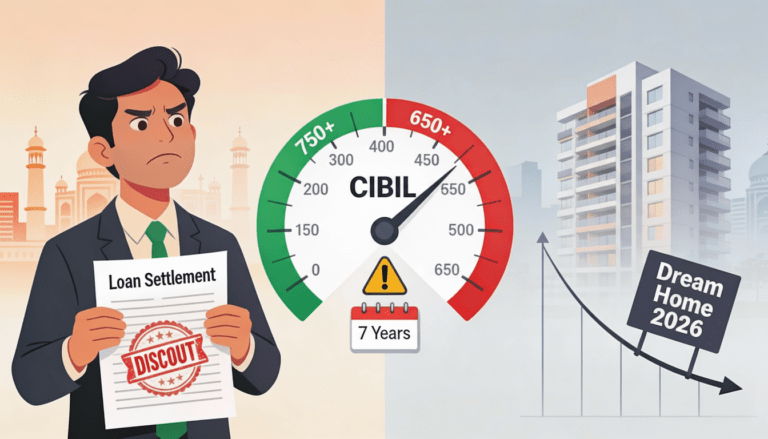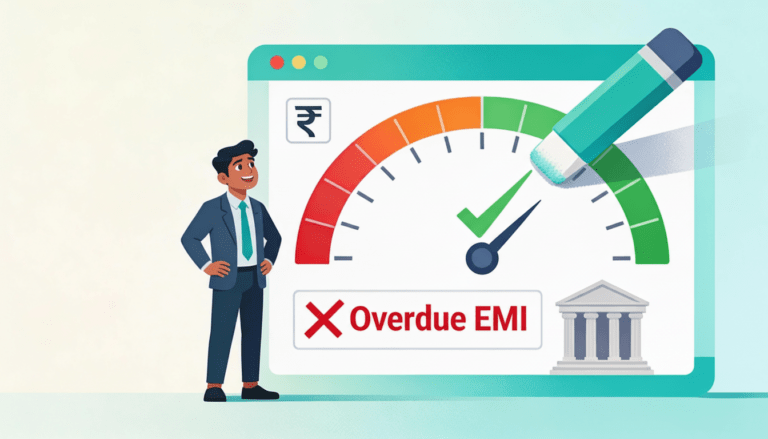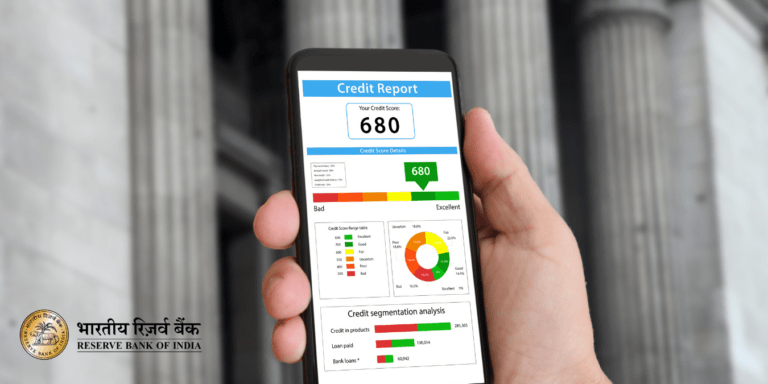
In India, higher education is often seen as a pathway to better career opportunities and financial stability. However, the rising cost of education has made it increasingly challenging for students and their families to afford quality education without financial assistance. This has led to the emergence of two popular financial tools: Education Loans and Education Plans. Both options have their own set of advantages and disadvantages, and choosing the right one can significantly impact your financial future.
The cost of higher education in India has been steadily increasing over the years. According to a report by CRISIL, the average cost of professional courses like engineering and medicine can range from ₹10 lakh to ₹25 lakh, while studying abroad can cost upwards of ₹50 lakh. With such high costs, many families are turning to financial tools like Education Loans and Education Plans to fund their children’s education.
But which one is better? Should you take out an Education Loan, or should you invest in an Education Plan? The answer depends on various factors, including your financial situation, risk tolerance, and long-term goals. In this blog post, we will compare Education Loans and Education Plans in detail to help you make an informed decision.
What is an Education Loan in India?
An Education Loan is a type of loan specifically designed to help students pay for their education expenses, including tuition fees, books, accommodation, and other related costs. These loans are typically offered by banks, Non-Banking Financial Companies (NBFCs), and government agencies.
Types of Education Loans in India
- Domestic Education Loans: These loans are for students pursuing higher education within India. They cover courses like engineering, medicine, management, and more.
- Overseas Education Loans: These loans are for students pursuing higher education abroad. They cover tuition fees, living expenses, travel costs, and other related expenses.
- Skill Development Loans: These loans are for students pursuing vocational courses or skill development programs.
To qualify for an Education Loan in India, you typically need to meet the following criteria:
- Admission to an Eligible Institution: You must have secured admission to a recognized institution in India or abroad.
- Age Limit: Most banks require the student to be between 16 and 35 years old.
- Co-applicant: A parent, guardian, or spouse is usually required as a co-applicant.
- Academic Record: A good academic record can improve your chances of loan approval.
Interest Rates and Repayment Terms
- Interest Rates: Interest rates for Education Loans in India vary depending on the lender and the loan amount. Public sector banks generally offer lower interest rates, ranging from 8.5% to 12%, while private banks and NBFCs may charge higher rates, ranging from 10% to 15%.
- Repayment Terms: Most Education Loans offer a moratorium period (also known as the course period plus 6 months to 1 year), during which you do not need to make any repayments. After the moratorium period, the repayment tenure can range from 5 to 15 years.
Pros and Cons of Education Loans
Pros:
- Immediate Access to Funds: Education Loans provide immediate funds to cover education expenses.
- Tax Benefits: Under Section 80E of the Income Tax Act, you can claim a deduction on the interest paid on an Education Loan for up to 8 years.
- No Collateral Required: For loans up to ₹7.5 lakh, most banks do not require collateral.
Cons:
- Debt Burden: Taking out a loan means you will have to repay the amount with interest, which can lead to significant debt.
- Credit Impact: Late or missed payments can negatively affect your credit score.
- Interest Accumulation: Interest starts accruing as soon as the loan is disbursed, increasing the total amount you need to repay.
What is an Education Plan?
An Education Plan is a financial product designed to help parents save for their child’s future education expenses. These plans are typically offered by insurance companies and investment firms and come in various forms, such as Child Plans, Unit Linked Insurance Plans (ULIPs), and Mutual Funds.
Types of Education Plans in India
- Child Plans: These are insurance-linked investment plans that provide a lump sum amount when the child reaches a certain age, typically 18 or 21.
- Unit Linked Insurance Plans (ULIPs): These plans combine insurance and investment, allowing you to invest in equity, debt, or a mix of both. The returns are market-linked, and the maturity amount can be used for education expenses.
- Mutual Funds: You can invest in mutual funds specifically designed for education planning, such as Child Education Funds. These funds invest in a mix of equity and debt instruments to provide long-term growth.
How Education Plans Work
Education Plans work by allowing you to invest a certain amount of money over a period of time. The funds grow based on market performance, and you can withdraw the money to pay for education expenses when needed.
For example, with a Child Plan, you pay regular premiums over a period of 10-15 years. The plan provides a lump sum amount at maturity, which can be used to fund your child’s education. Some plans also offer partial withdrawals to meet intermediate education expenses.
Pros and Cons of Education Plans
Pros:
- Tax Benefits: Under Section 80C of the Income Tax Act, you can claim a deduction of up to ₹1.5 lakh on the premiums paid for certain Education Plans.
- No Debt: Unlike loans, Education Plans do not require repayment, so you won’t be burdened with debt.
- Flexibility: Some plans allow you to change the investment strategy or withdraw funds partially to meet education expenses.
Cons:
- Market Risk: The value of your investments in Education Plans can fluctuate based on market conditions.
- Lock-in Period: Some plans have a lock-in period, during which you cannot withdraw funds without penalties.
- Limited Use of Funds: The funds in Education Plans are primarily intended for education expenses, and using them for other purposes may result in penalties.
Latest Data and Trends
According to recent data, the average cost of higher education in India has been steadily increasing. For instance, the annual tuition fee for engineering courses in private institutions can range from ₹1 lakh to ₹5 lakhs. Medical courses can be even more expensive, with fees ranging from ₹5 lakhs to ₹20 lakhs per annum.
Education Loans:
- Rising Borrowing Rates: The total outstanding education loan portfolio in India grew by 17% in FY23, reaching ₹96,847 crore.
- Default Rates: The Non-Performing Assets (NPAs) in education loans stood at 7.82% of the total outstanding portfolio at the end of the first quarter of FY24.
- Government Initiatives: The Pradhan Mantri Vidya Lakshmi Karyakram provides a single-window electronic platform for students to access information and apply for education loans and scholarships.
Education Plans:
- Growing Popularity: Education plans are gaining popularity as more parents recognize the benefits of early savings and investment.
- Tax Advantages: Contributions to education plans are often tax-deductible under Section 80C of the Income Tax Act.
- Market Performance: The performance of education plans is closely tied to market conditions, with potential for higher returns during bullish markets.
Education Loan vs Education Plan: Key Differences
When deciding between an Education Loan and an Education Plan, it’s essential to understand their key differences. Below is a detailed comparison to help you make an informed decision:
| Aspect | Education Loan | Education Plan |
| Definition | A loan taken to fund education expenses, repaid with interest over time. | A savings or investment plan designed to accumulate funds for future education expenses. |
| Purpose | Provides immediate funds to cover education costs. | Helps save and invest over time to meet future education expenses. |
| Source | Offered by banks, NBFCs, and government institutions. | Offered by insurance companies, mutual funds, and investment firms. |
| Eligibility | Requires admission to a recognized institution and a co-applicant (parent/guardian). | No eligibility criteria; anyone can start an Education Plan for a child’s future. |
| Financial Commitment | Borrowed amount + interest must be repaid after the moratorium period. | No repayment required; involves regular savings or investments over time. |
| Interest Rates | Ranges from 8.5% to 15% depending on the lender and loan type. | No interest; returns depend on market performance (e.g., ULIPs, mutual funds). |
| Repayment | Repayment starts after the moratorium period (course duration + 6-12 months). | No repayment; funds are withdrawn as needed for education expenses. |
| Tax Benefits | Interest paid is deductible under Section 80E (up to 8 years). | Premiums paid are deductible under Section 80C (up to ₹1.5 lakh). |
| Risk Factors | Risk of debt burden and credit score impact if repayments are delayed. | Market risk; returns depend on investment performance. |
| Flexibility | Immediate access to funds but comes with repayment obligations. | Funds are locked in until maturity or specific withdrawal conditions are met. |
| Collateral | Required for loans above ₹7.5 lakh (varies by lender). | No collateral required; purely a savings/investment product. |
| Tenure | Repayment tenure ranges from 5 to 15 years after the moratorium period. | Investment tenure typically ranges from 10 to 20 years depending on the plan. |
| Use of Funds | Can be used for tuition fees, accommodation, books, and other education expenses. | Funds are primarily intended for education expenses but can be used for other purposes (with penalties). |
| Debt Impact | Creates a liability (debt) that must be repaid with interest. | No debt; builds a corpus for future use. |
| Suitability | Ideal for those who need immediate funds and can repay the loan in the future. | Ideal for those who want to save and invest early to avoid future debt. |
Summary of Key Differences:
- Education Loans are best suited for those who need immediate funds and are confident in their ability to repay the loan in the future. They come with the obligation to repay the principal amount plus interest.
- Education Plans are ideal for those who want to save and invest over time to build a corpus for future education expenses. They do not create debt but are subject to market risks.
Case Studies
Case Study 1: Ravi’s Education Plan
Ravi started a Child Plan when his daughter was born. He contributed ₹10,000 per month, and by the time his daughter turned 18, the plan had grown to ₹30 lakh. He used the funds to pay for his daughter’s college tuition, room, and board without incurring any taxes or penalties. Ravi avoided taking on debt and was able to fully fund his daughter’s education.
Case Study 2: Priya’s Education Loan
Priya took out an Education Loan to pay for her MBA degree. She borrowed ₹15 lakh at an interest rate of 10%. After completing her MBA, she secured a well-paying job and was able to repay the loan within 5 years. While Priya had to manage her debt, she was able to pursue her education without delay.
Latest Trends and Data in Education Financing in India
- Rising Education Costs: According to a report by Assocham, the cost of professional education in India has increased by 100-150% over the last decade. This has made education financing more important than ever.
- Increase in Education Loan Disbursements: According to the Reserve Bank of India (RBI), the total outstanding Education Loans in India stood at ₹80,000 crore in 2023, reflecting the growing reliance on Education Loans to fund higher education.
- Growth of Child Plans and ULIPs: The Insurance Regulatory and Development Authority of India (IRDAI) reported a significant increase in the sale of Child Plans and ULIPs, with a growth rate of 15-20% in 2022. This highlights the increasing popularity of Education Plans as a tool for saving for future education expenses.
- Impact of COVID-19: The COVID-19 pandemic has had a significant impact on education financing in India, with many families facing financial hardships. This has led to an increased interest in both Education Loans and Education Plans as families seek ways to fund education in uncertain times.
Final Thought
Choosing between an education loan and an education plan depends on various factors, including financial goals, risk tolerance, and the time horizon for education expenses. Education loans provide immediate access to funds but come with the burden of debt and interest. On the other hand, education plans promote long-term savings and financial discipline but are subject to market risks.
Ultimately, the best choice will vary for each individual or family. It’s crucial to assess your financial situation, consider the pros and cons of each option, and seek professional advice if needed. By making an informed decision, you can ensure a brighter and financially secure future for your education journey.
-

RBI’s Approval: HDFC Group Gets 9.5% Stake Nod in IndusInd Bank
-

SBI’s YONO 2.0 Promises Faster, Smarter, Safer Payments — A Real Threat to PhonePe & GooglePay?
-

Indian Stocks Fall as Foreign Investors Extend Sell-Off: What’s Behind the Market Jitters?
-

BlackRock’s $140M Ethereum Dump: Hidden Opportunity for Indian Investors?





























